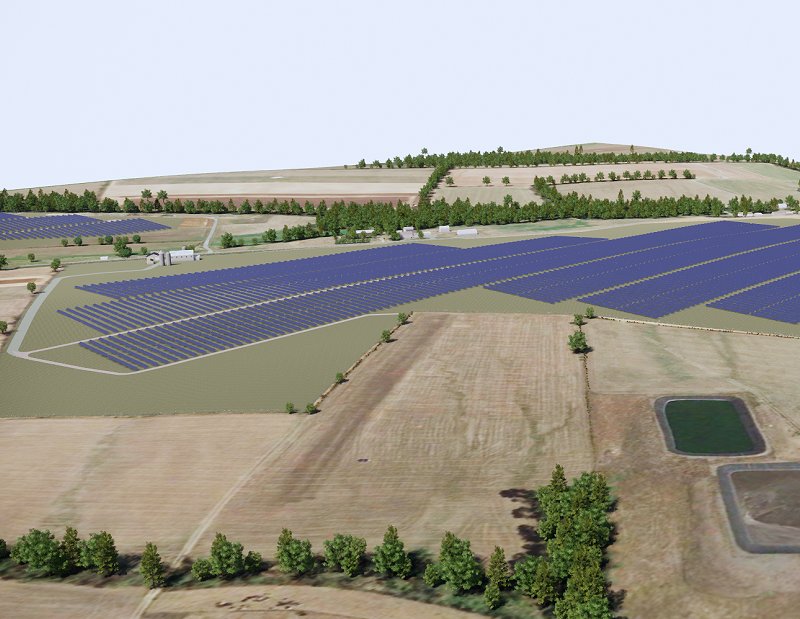Penn State, Lightsource BP Break Ground on 70MW Solar Project
Touted as the largest solar development in the state, the facility is set to incorporate environmentally conscious design elements.

A 70-megawatt solar farm in Franklin County, Pa., will provide about 25 percent of Penn State’s statewide electricity needs. Rendering courtesy of Lightsource BP
Penn State University and Lightsource BP have broken ground on a 70-megawatt solar project in Pennsylvania. The project is touted as the largest solar development in the state and is estimated to provide 25 percent of the university’s electricity needs over the next 25 years.
Lightsource BP will build, own and operate the facility, which will comprise 150,000 solar panels across three locations, spanning more than 500 acres of leased land in Franklin County, Pa. EPC contractor Rosedin has hired engineering firm Stantec to provide electrical, structural and civil engineering design services. For this project, the firm has formed a team made of specialists from five of its offices.
Lightsource will sell the electricity to Penn State under a long-term power purchase agreement. Penn State has set a goal to reduce greenhouse gas emissions by 35 percent by 2020 and to diversify the university’s energy portfolio through the adoption of solar power.
A sustainable approach to solar farming
What’s special about this project is that The Nature Conservancy and Penn University researchers selected a low-impact site, avoiding areas of high biodiversity and high resiliency. Consequently, the design team is incorporating environmentally conscious design elements such as grasses and shrubs that will help increase pollination and hinder honeybee population decline. In addition, the project will serve as a working laboratory for students and faculty.
The solar facility is estimated to save Penn State some $14 million over the contract’s term through the low cost of solar electricity. Moreover, the project is expected to lower Penn State’s greenhouse gas emissions by 57,000 metric tons of carbon dioxide per year, the equivalent of taking 12,100 fuel-burning cars off the road. The development will also strengthen rural communities, employ more than 250 people during the construction period and provide farmers with an additional source of income.







You must be logged in to post a comment.